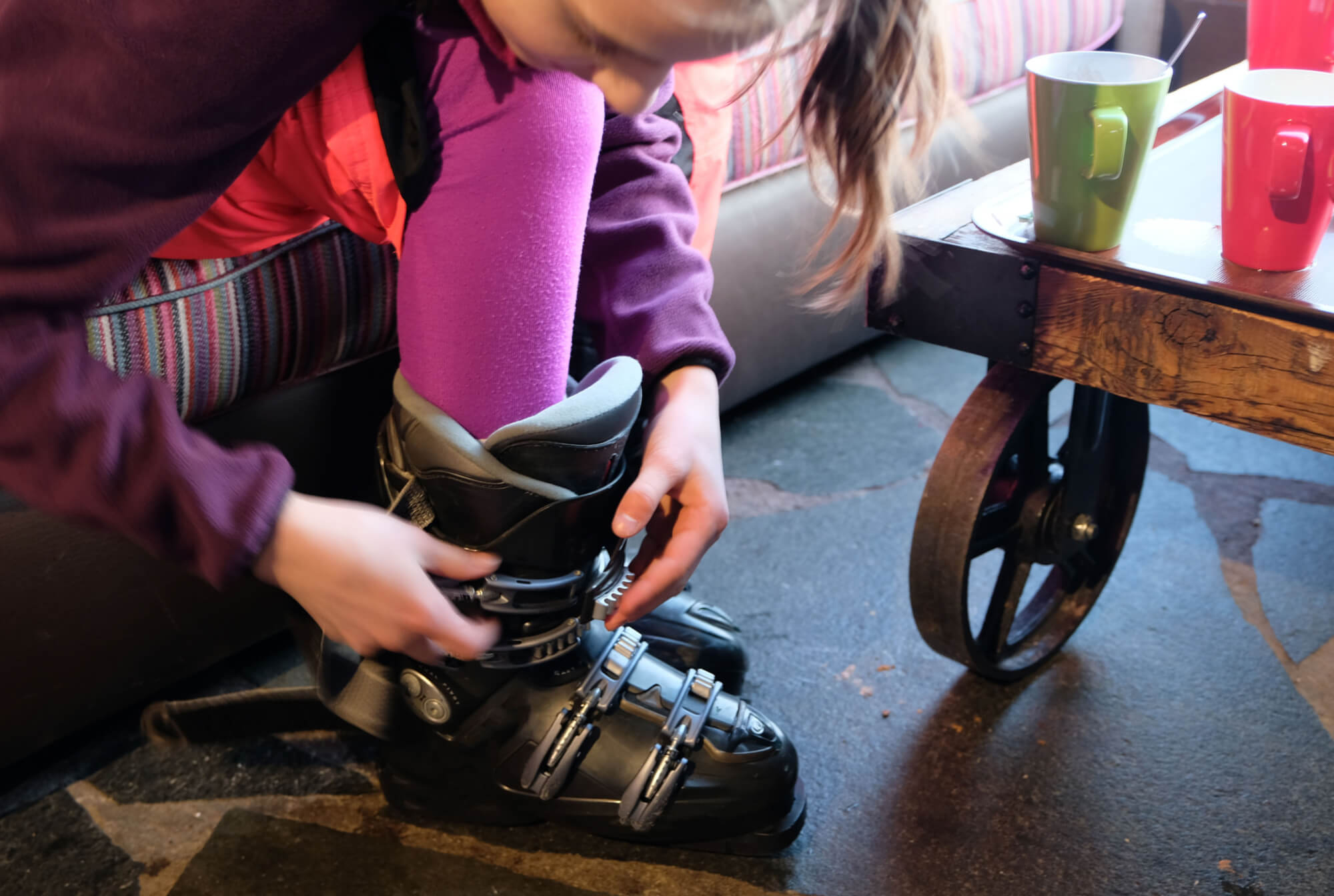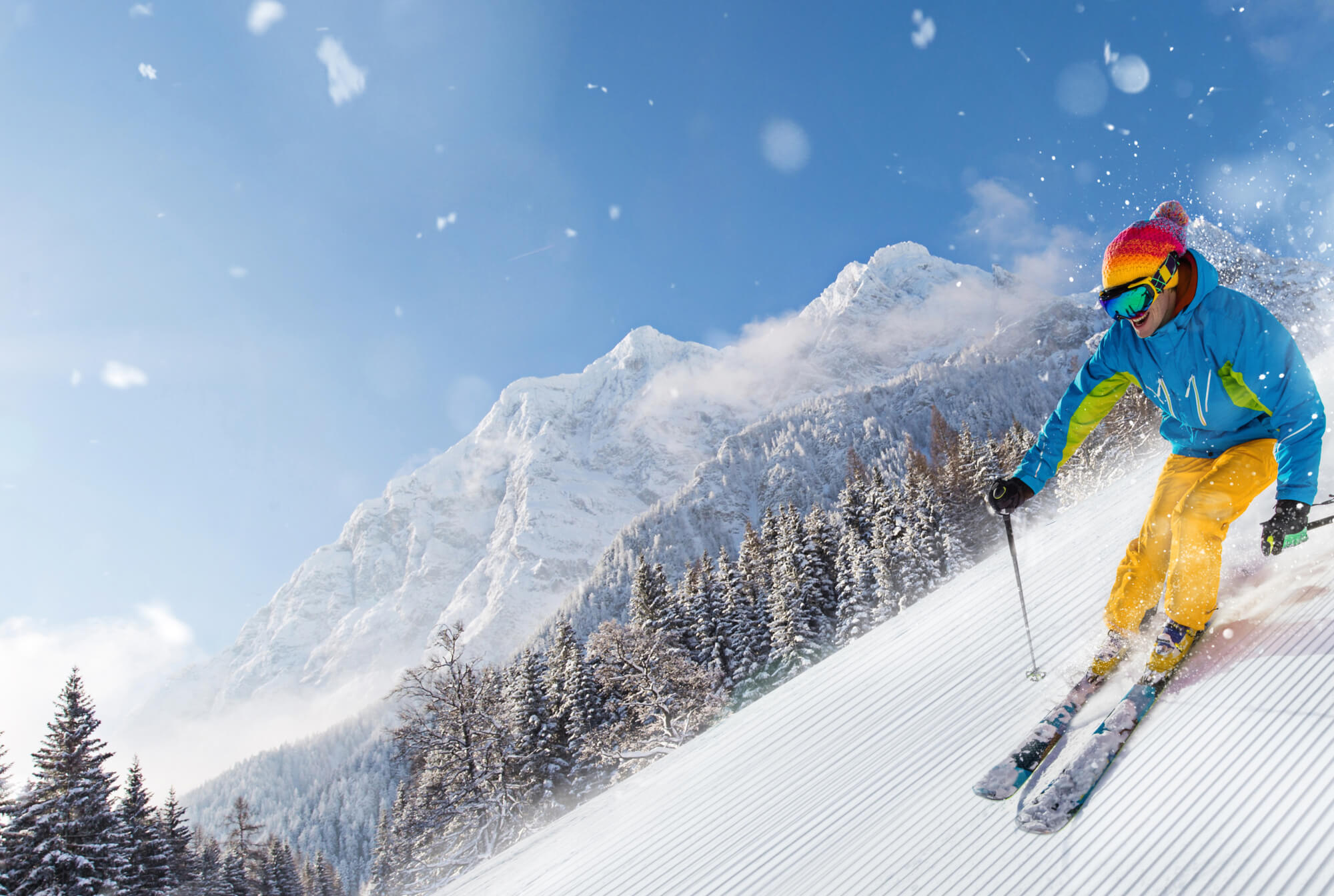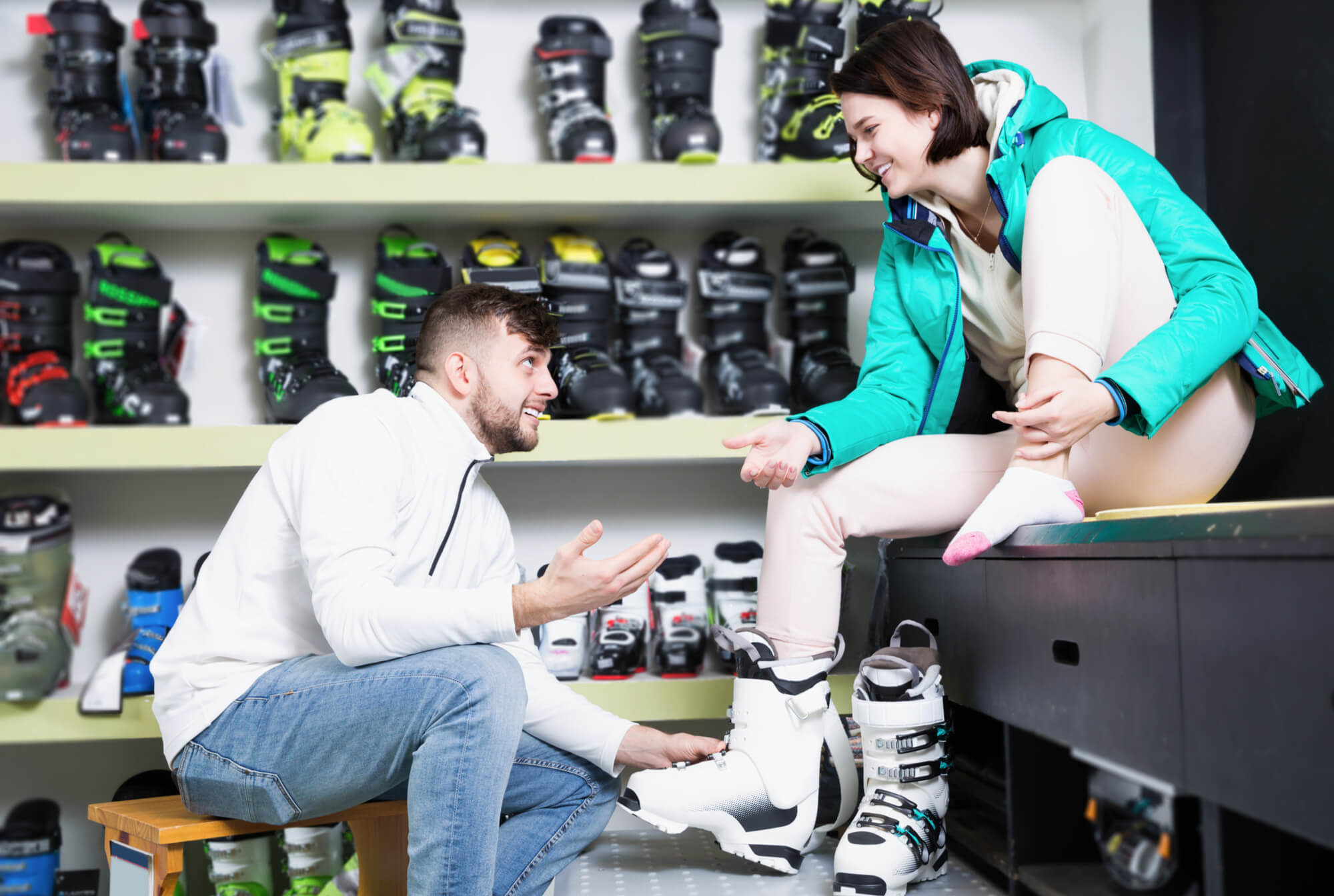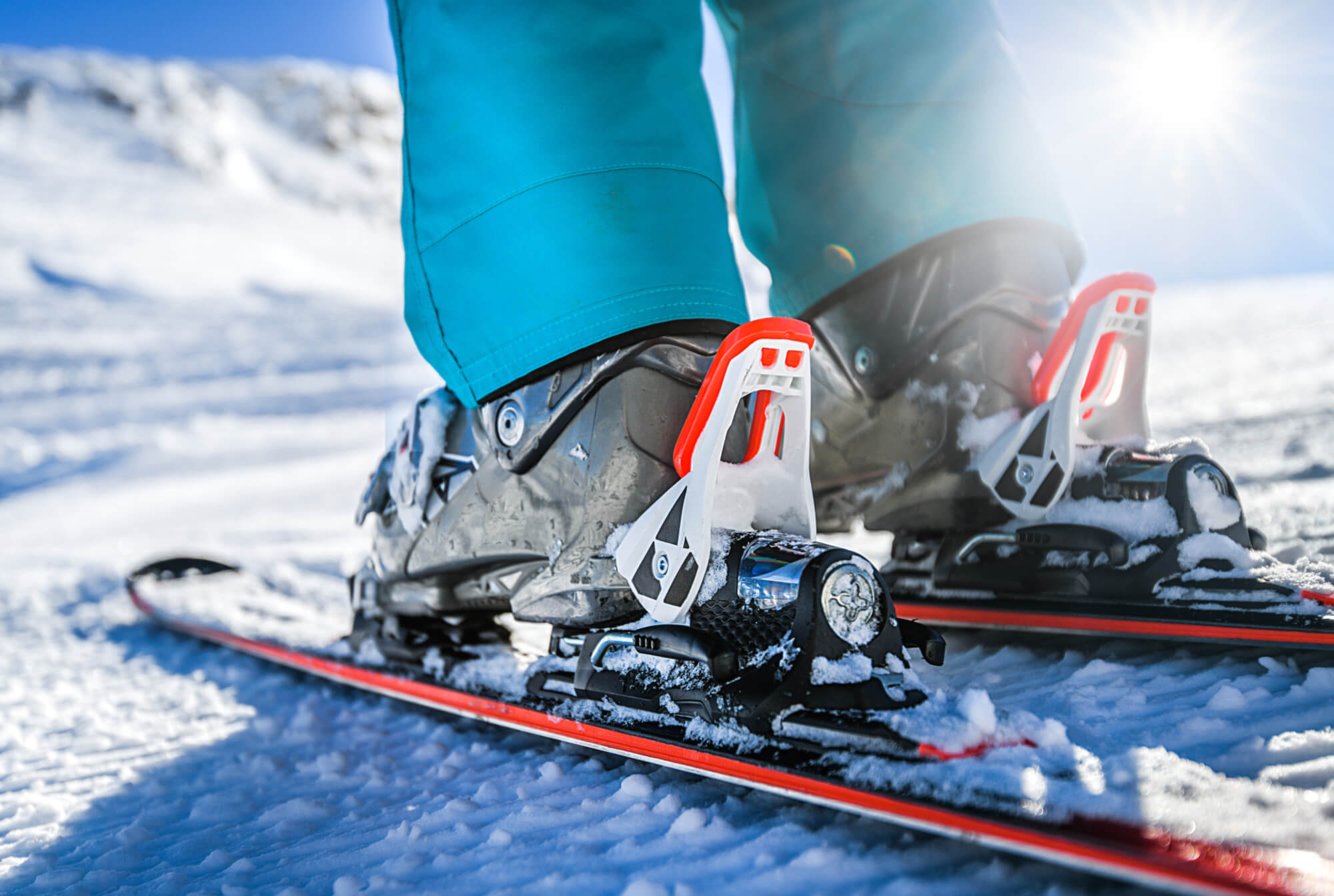Always choose ski boots according to your skiing skills, weight and foot size. You will have to keep in mind several necessary parameters when choosing.
Women's vs men's ski boots
Women's ski boots have a differently shaped shoe skeleton compared to men's. Women naturally have the calf muscle situated lower. The heel of the boot is shaped narrower, and they are usually more insulated.
Men's ski boots have a higher shaped skeleton in the calf area and tend to be stiffer to withstand greater pressure.
Correct length and width of the ski boot
The basic parameter of the ski boot itself is its length and width. It is important to measure each foot separately, as it is common for sizes to differ by a few millimetres.
How to determine the correct length and width of ski boots at home?
If you are buying ski boots online, before you order them, open the detailed size chart and measure your foot on paper. You only need a pencil, paper and ruler. We will advise you on how to do it.
MUZIKER TIP:
Focus on both feet. If one foot is longer than the other, it is a standard situation that you don't need to worry about. Go with the bigger size.
Focus on bigger ski boots
When you are selecting the size, focus on ski boots that are approximately 0.5 cm larger. However, don't overdo it. The liner will get looser in the ski boot and the foot will get more space. When skiing, the controllability of your skis will deteriorate.

The width of the ski boot is also important. However, different manufacturers label it differently. It is usually between 96 and 106 mm. The width has an impact on the correct transfer of energy from the ski boots to the ski.
Flex index: Stiffness of the skeleton
The stiffness of the skeleton - flex index - is a parameter that defines the flexibility of the ski boot. This information expresses how much force is required to bend the cuff of the ski boot by 10°. The index ranges from 40 to more than 130.
MUZIKER TIP:
Remember that as an excellent skier, you can have hard ski boots and soft skis. But never do it the other way around. With soft ski boots on hard skis, you would have to work extremely hard and waste energy, and the ride would not be as smooth. If you want to know how to choose skis according to technical parameters, read our article on ski parameters, which will explain it simply.
Children's ski boots
For children, get kids ski boots, which have an index from 40 to 90. The highest number is suitable for young racers.
Skiers - beginners
For recreational skiers who are just starting to ski, a ski index in the range of 60-80 is suitable. They are flexible, a beginner can easily handle a whole day of skiing in them. However, they are suitable for slower skiing.
Advanced skiers
If you enjoy skiing, make big turns and need precise ski control, focus on the index 90-110. These ski boots are still comfortable, but they are intended for a sportier skiing style.
Professional skiers
For those who literally live for skiing, have an excellent technique and love high speed, ski boots with the highest index are suitable - 120-130.
You can easily control the ski, it will support you even at breakneck speed, but the disadvantage is that your lower legs will be in mild discomfort after a long ride. Even in this case, however, there is a simple solution. When you're on the cable car, simply unfasten your clips for a moment.

Flex in men's ski boots
There are differences in the index even between men's and women's ski boots. For:
- men beginners soft flex 60-80 is suitable;
- For slightly advanced, the ideal flex is 90-100;
- 110-120 is suitable for advanced men;
- An index above 130 is not a problem for an expert.
Flex in women's ski boots
Ladies who are:
- beginners will not need more than an index of 60;
- moderately advanced can get by with a flex of 65-80;
- advanced reach for 85-100;
- experts will use flex 110 and more.
How to choose buckles?
The binding is a factor that you should not forget when choosing ski boots. Buckles are placed strategically.
Adult models usually have 3-4 buckles and possibly an adjusting wheel. If the ski boot has only 3 buckles, the middle one must always be placed on the instep and turned at an angle of 45 degrees to fix the foot even under high pressure.
Fastening the buckle
When you're going to try on a new ski boot, remember that you should fasten it on the second notch at the most. In the future, you will probably need to tighten it more - this way you will ensure that you have more notches in reserve.
Trying on ski boots
After meeting all the parameters and choosing specific ski boots, it is advised to try them on properly for a longer period of time.
Ski boots must not be too tight, you cannot feel that they are too small for you. Remember that even if you initially have a problem with inserting your foot or putting on the ski boot, it does not automatically mean that your ski boot is small. You only need to practice putting them on until it becomes automatic.

Buckle fastening order
Put on the clips in the exact order. First fasten the third and fourth from the bottom, this way you will naturally slide the heel back and make room for your toes.
Next, fasten the first and second buckle. When you walk in the ski boots and gently bend them, a smaller space will be created in the front part. Make sure it is comfortable.
Leave the ski boots on your feet for at least 20 minutes. If they don't feel too tight even then, chances are you've made the right choice.
Types of ski boots
The most popular ski boots include on-piste ski boots. They are suitable not only for beginners, but also for advanced skiers who want to keep their feet comfortable. They are soft, reinforced, provide sufficient comfort and do not cause bruises.
Racing ski boots - race - they have a rigid skeleton, are easy to control and quickly transfer the power of the leg to the skis. They have a high flex - that's why they are uncomfortable to wear all day.
All mountain ski boots are sort of in the middle between race and on-piste ski boots. They are suitable for the natural terrain, but at the same time they are not so hard that one cannot stand to ski in them all day on the pistes.
 Musical Instruments
Musical Instruments



 Water Sports
Water Sports




 Austria
Austria
 Belgium
Belgium
 Bosnia and Herzegovina
Bosnia and Herzegovina
 Bulgaria
Bulgaria
 Croatia
Croatia
 Czech Republic
Czech Republic
 Denmark
Denmark
 Estonia
Estonia
 Finland
Finland
 France
France
 Germany
Germany
 Greece
Greece
 Hungary
Hungary
 Ireland
Ireland
 Italy
Italy
 Latvia
Latvia
 Lithuania
Lithuania
 Luxembourg
Luxembourg
 Netherlands
Netherlands
 Poland
Poland
 Portugal
Portugal
 Romania
Romania
 Serbia
Serbia
 Slovakia
Slovakia
 Slovenia
Slovenia
 Spain
Spain
 Sweden
Sweden
 Switzerland
Switzerland
 Turkey
Turkey
 Ukraine
Ukraine
 United Kingdom
United Kingdom
 default
default



